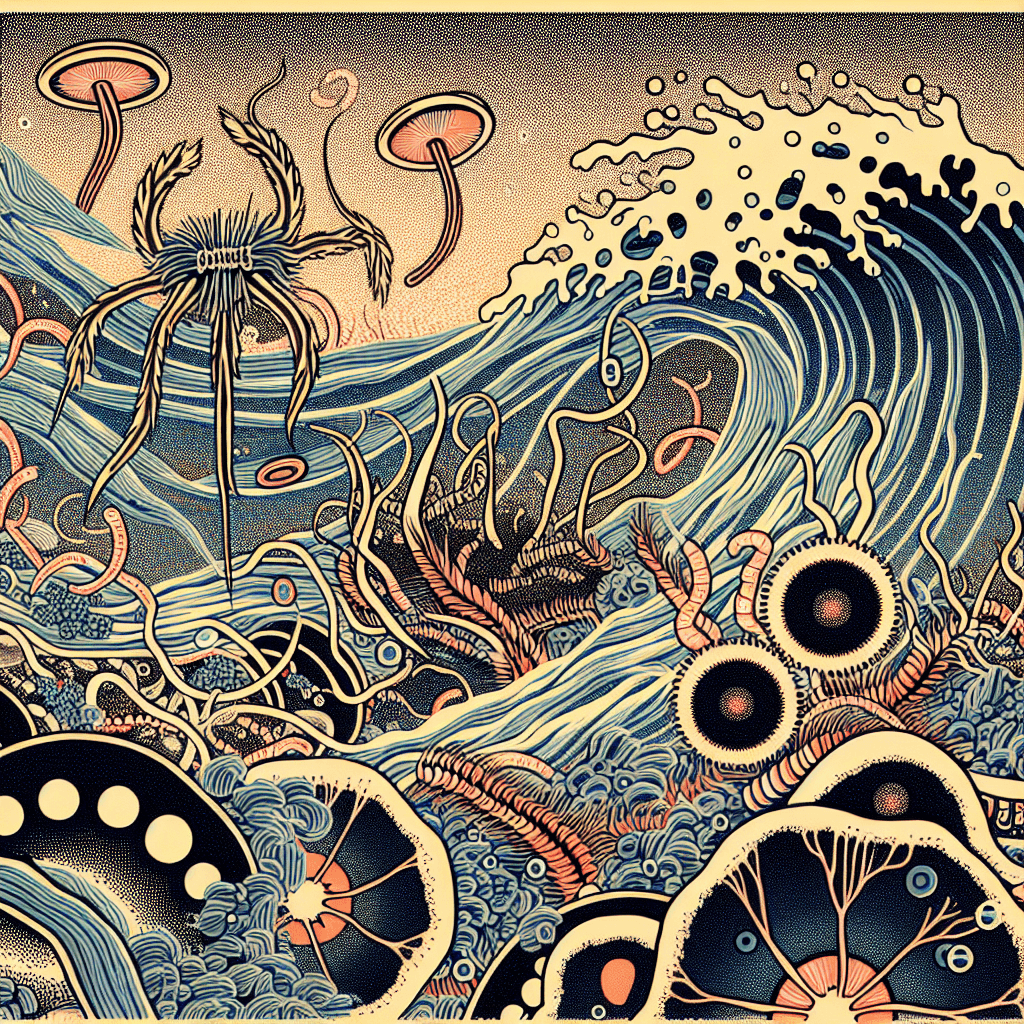Unveiling the Parasite: The Science Behind *Toxoplasma gondii*-1-2-3-4
syndu | Oct. 3, 2024, 8:42 p.m.

Unveiling the Parasite: The Science Behind Toxoplasma gondii
Introduction
Toxoplasma gondii (T. gondii) is a fascinating protozoan parasite that has intrigued scientists for decades due to its complex life cycle and its ability to infect a wide range of warm-blooded animals, including humans. This blog post delves into the biology and life cycle of T. gondii, exploring how it affects both feline and human hosts, and the implications of its widespread presence in the environment.
Understanding Toxoplasma gondii
Structure of Toxoplasma gondii
Toxoplasma gondii is a single-celled eukaryotic organism belonging to the phylum Apicomplexa. It possesses several unique cellular structures that facilitate its parasitic lifestyle:
- Apical Complex: This specialized structure includes organelles such as rhoptries, micronemes, and dense granules, which are crucial for host cell invasion and establishment of infection.
- Nucleus: Like other eukaryotes, T. gondii has a well-defined nucleus containing its genetic material, which is organized into chromosomes.
- Mitochondrion: The parasite contains a single, elongated mitochondrion that plays a vital role in energy production and metabolic processes.
- Apicoplast: This non-photosynthetic organelle is involved in essential biosynthetic pathways, including fatty acid synthesis, and is a target for antiparasitic drugs.
Morphological Forms
Toxoplasma gondii exists in several morphological forms, each adapted to different stages of its life cycle:
- Tachyzoites: These are the rapidly dividing, crescent-shaped forms responsible for acute infection. They invade host cells and multiply within a parasitophorous vacuole.
- Bradyzoites: These are the slow-growing, encysted forms found in tissue cysts during chronic infection. They can persist in host tissues for the host's lifetime.
- Oocysts: These are the environmentally resistant forms shed in the feces of infected cats. Oocysts undergo sporulation in the environment, becoming infectious to intermediate hosts.
Functioning and Life Cycle
Host Cell Invasion
Toxoplasma gondii employs a sophisticated mechanism to invade host cells:
- Attachment: The parasite attaches to the host cell surface using its apical complex.
- Penetration: It secretes proteins from its micronemes and rhoptries to facilitate entry into the host cell, forming a parasitophorous vacuole.
- Replication: Within the vacuole, T. gondii replicates by a process called endodyogeny, producing two daughter cells from a single mother cell.
Immune Evasion
Toxoplasma gondii has evolved strategies to evade the host's immune system:
- Modulation of Host Immune Response: The parasite can alter host immune signaling pathways, reducing the effectiveness of the immune response.
- Intracellular Niche: By residing within a parasitophorous vacuole, T. gondii avoids detection and destruction by the host's immune cells.
Transmission and Infection
Toxoplasma gondii has a complex life cycle involving both definitive and intermediate hosts:
- Definitive Hosts: Cats are the only definitive hosts where T. gondii undergoes sexual reproduction, producing oocysts.
- Intermediate Hosts: A wide range of warm-blooded animals, including humans, serve as intermediate hosts. Infection occurs through ingestion of oocysts from contaminated environments or tissue cysts in undercooked meat.
Conclusion
Toxoplasma gondii is a remarkable parasite with a complex life cycle that highlights the intricate interplay between biology and the environment. Understanding the science behind T. gondii is crucial for managing the challenges it poses to human and animal health. By appreciating the role of cats as definitive hosts and recognizing the various transmission pathways, we can better implement strategies for prevention and care.
As research continues to uncover the mysteries of T. gondii, it is essential to remain vigilant and proactive in mitigating its potential impacts on human health. Public health initiatives focusing on hygiene, food safety, and responsible pet ownership are vital in reducing the risk of infection and promoting well-being. Through these efforts, we can foster a harmonious coexistence with our feline companions and safeguard human health against this ancient parasite.








